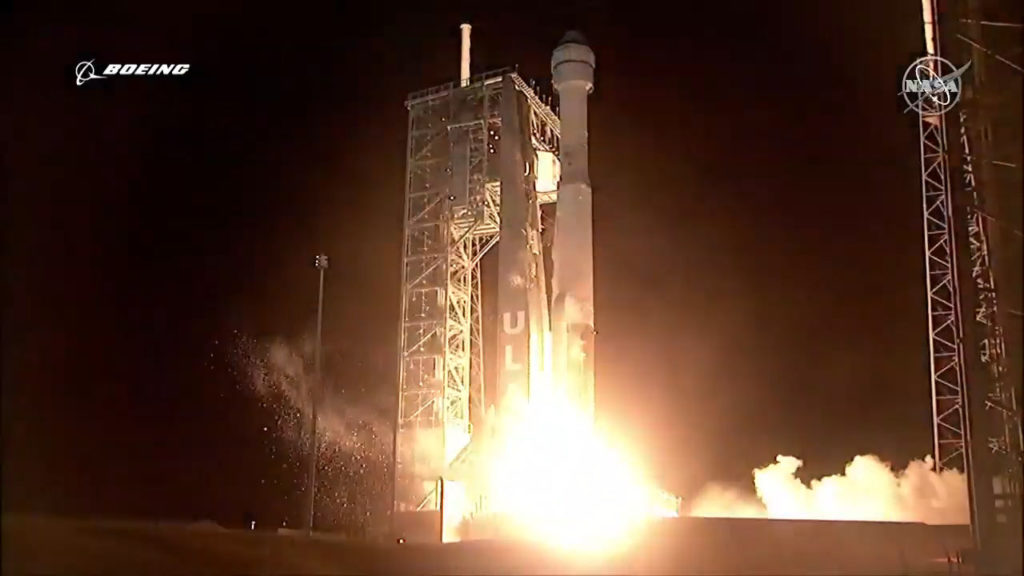
Despite a beautiful performance from its Atlas V N22 booster and dual-engine Centaur second stage at 11:36:43 UT 20 Dec 2019, Boeing’s CST-100 Starliner suffered a flight control anomaly half an hour into its flight. The vessel misfired its thrusters, placing the spacecraft designed to carry astronauts to the International Space Station in a low orbit, without enough fuel to both reach the ISS and safely return the vessel to Earth.
The misfire was thought to be the result of a computer software failure involving an incorrect time value. While astronauts Mike Fincke and Nicole Mann were confident that they could have resolved the situation almost instantly had they been aboard, the naturally slower ground response to the glitch took up precious time at a critical phase of flight. The situation was exacerbated as the vessel was flying in the switchover zone between two of NASA’s TDRS geosynchronous communication satellites.
NASA and Boeing agree that the vessel can still perform a normal landing at White Sands Space Harbour, New Mexico. However, it will do so without delivering its cargo to the space station, and will serve to end the 2010s, a decade notable for America’s lack of human spaceflight, on an off note. As the vessel is now responding to ground commands, Boeing and NASA engineers will evaluate the number of flight objectives that can be achieved.
Landing at White Sands will control the remaining timeline for the mission, because the vessel’s orbital track limits the number of chances. Also of note is Starliner’s altitude; its orbit, which at 1400 UT was roughly 216 x 186 km, is rather low, but the increased atmospheric drag will still be manageable if the mission timeline is kept short.
Because the onboard RCS motors discharged about 25% of the vessel’s fuel, the craft has much less hydrazine fuel aboard now than expected. As such, flight controllers will not be in a hurry to test non-essential flight operations, especially flips and rolls that don’t get them safely to New Mexico. There had been active debate about whether the vessel should still attempt to reach the ISS, which was almost certainly ruled out by the post-launch press conference. The problems will require full review of the root cause of the problem, in particular, if the onboard flight computer can be relied upon to execute the vessel’s landing sequence.
Failure and unexpected adversity are critical to the engineering process. At the same time, it is informative to observe that the root cause of the problem, possibly as simple as an incorrect clock, highlights the need for redundancy, error detection, and correction, in all key sensor and software systems. Still, reaching orbit in a crew-rated vessel remains a rarefied achievement, and despite the setback a great deal will be learned from this mission. The Starliner Orbital Flight Test can be counted as a successful failure.
Update: At ~0300 UT 21 Dec, Celestrak indicated the Starliner orbit to be 221 x 185 km. The 1400 UT 20 Dec value has been corrected in this article.

One thought on “Boeing misses ISS in Starliner flight test”
Comments are closed.